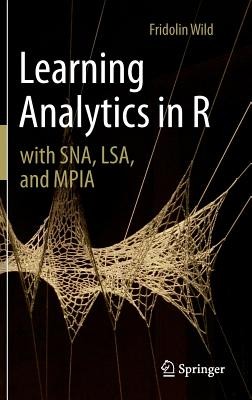
- We will send in 10–14 business days.
- Author: Fridolin Wild
- Publisher: Springer
- ISBN-10: 3319287893
- ISBN-13: 9783319287898
- Format: 15.6 x 23.4 x 1.8 cm, hardcover
- Language: English
- SAVE -10% with code: EXTRA
Reviews
Description
This book introduces Meaningful Purposive Interaction Analysis (MPIA) theory, which combines social network analysis (SNA) with latent semantic analysis (LSA) to help create and analyse a meaningful learning landscape from the digital traces left by a learning community in the co-construction of knowledge.
The hybrid algorithm is implemented in the statistical programming language and environment R, introducing packages which capture - through matrix algebra - elements of learners' work with more knowledgeable others and resourceful content artefacts. The book provides comprehensive package-by-package application examples, and code samples that guide the reader through the MPIA model to show how the MPIA landscape can be constructed and the learner's journey mapped and analysed. This building block application will allow the reader to progress to using and building analytics to guide students and support decision-making in learning.
EXTRA 10 % discount with code: EXTRA
The promotion ends in 20d.15:23:47
The discount code is valid when purchasing from 10 €. Discounts do not stack.
- Author: Fridolin Wild
- Publisher: Springer
- ISBN-10: 3319287893
- ISBN-13: 9783319287898
- Format: 15.6 x 23.4 x 1.8 cm, hardcover
- Language: English English
This book introduces Meaningful Purposive Interaction Analysis (MPIA) theory, which combines social network analysis (SNA) with latent semantic analysis (LSA) to help create and analyse a meaningful learning landscape from the digital traces left by a learning community in the co-construction of knowledge.
The hybrid algorithm is implemented in the statistical programming language and environment R, introducing packages which capture - through matrix algebra - elements of learners' work with more knowledgeable others and resourceful content artefacts. The book provides comprehensive package-by-package application examples, and code samples that guide the reader through the MPIA model to show how the MPIA landscape can be constructed and the learner's journey mapped and analysed. This building block application will allow the reader to progress to using and building analytics to guide students and support decision-making in learning.


Reviews